……
Prologue
1928_Zhang Zuolin Explosion Death Incident(The Huanggutun incident)
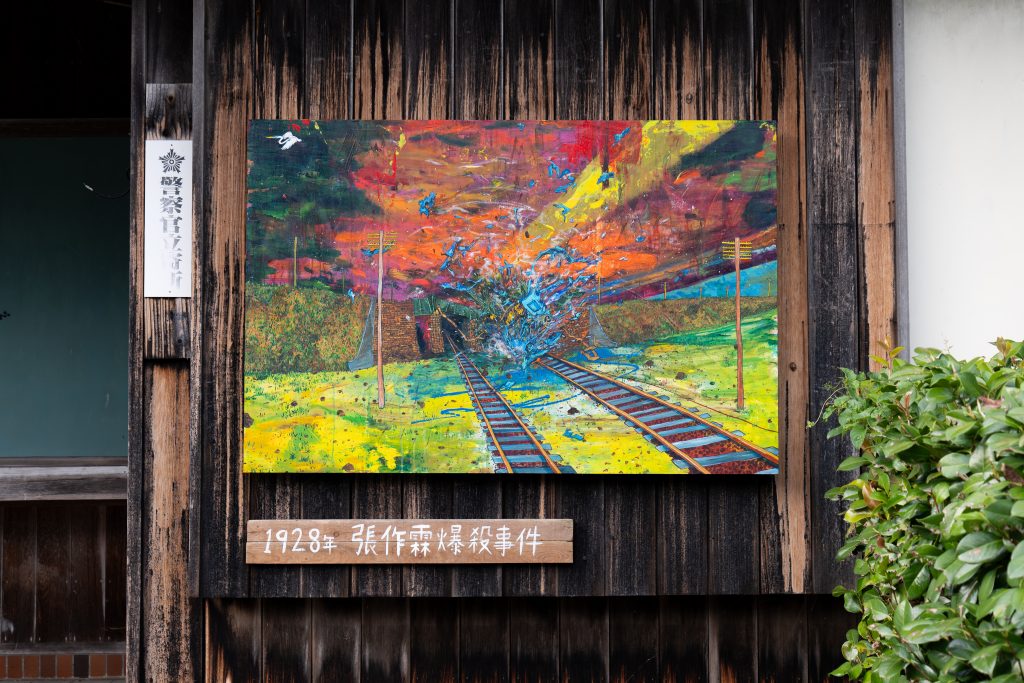
The Zhang Zuolin Explosion Death Incident was the assassination of the Fengtian warlord and Generalissimo of the Military Government of China Zhang Zuolin near Shenyang on 4 June 1928.Zhang was killed when his personal train was destroyed by an explosion at the Huanggutun Railway Station that had been plotted and committed by the Kwantung Army of the Imperial Japanese Army.
01
・The Manchurian Mongolian Settlement
In the autumn of 1929, the Great Depression, which began in the US, quickly spread across the world and the Japanese economy was in the depths of recession. On 18 September 1931, the tracks of the South Manchuria Railway were blown up at Lake Liujiao, leading to the Manchurian Incident. Although staged by the Kwantung Army, the military took advantage of the incident to quickly overrun various parts of Manchuria, and Manchukuo declared independence in March 1932. The following year, the Japanese began in earnest to explore Manchuria and Mongolia.
02
・試験移民
In October 1932, 423 armed emigrants were selected from among the Imperial Japanese servicemen in Japan for the first round of armed emigration. They came from six prefectures in the Tohoku region and the prefectures of Niigata, Nagano, Gunma, Tochigi and Ibaraki, poor areas that had been hit hard by the Great Depression. The second round of armed emigration was extended to the Tohoku, Kanto and Hokuriku prefectures, with 31 people from Ishikawa taking part. However, both the first and second rounds were marauding by bandits, resulting in a succession of deaths and dropouts. With the support of the military, the third and fourth rounds of experimental immigration continued, and the government began to make mass immigration a national policy, devoting all its energies to the million-unit pioneer immigration program.
03
I was born in 1922 on the Noto Peninsula, where favor of civilization never reaches. My name is NANPO Hosaku. I was the third son of ten brothers and sisters in a peasant farming family. When I was in primary school, there was no electricity in the village and no radio, newspapers or magazines. Although we lived in a strict feudal society, I think I was brought up in good spirits from an early age.
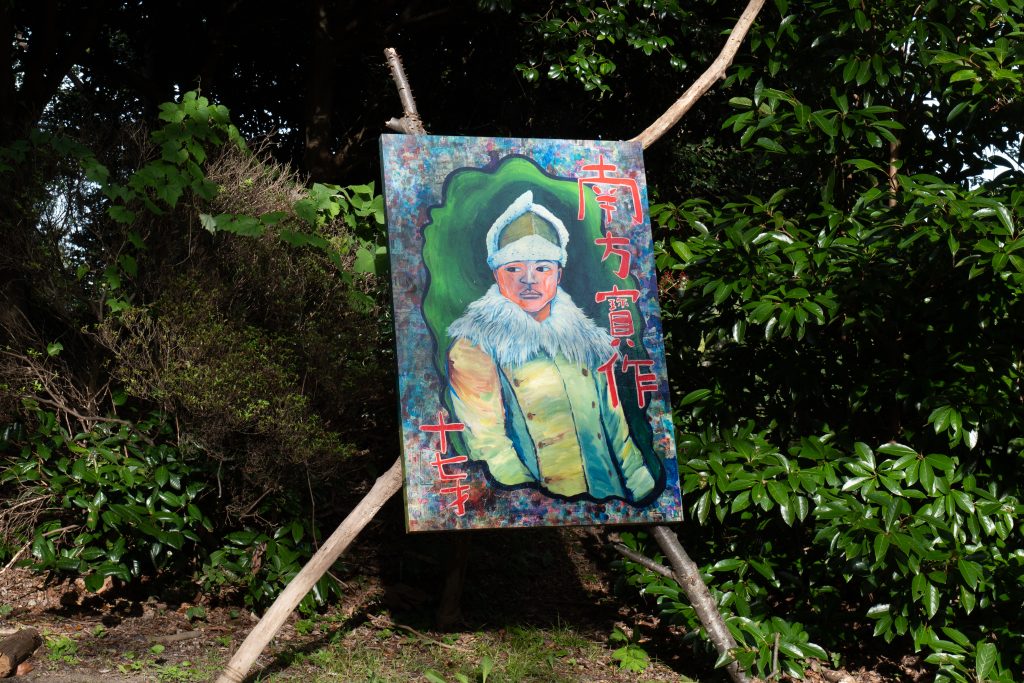
04
On 7 September 1934, when I was in the sixth grade, an Imperial Japanese Navy seaplane crash-landed on a nearby beach due to engine failure. It was a two-seater reconnaissance aircraft, linen-clad with wooden aggregate and painted silver. The crew’s names were Yamagishi and Ueno, written on a nameplate on their chest. It was a very unusual case.
My elder brother, who died young of illness, told me, “Hosaku, study hard and become an aeroplane pilot”.
These words had a great impact on my life. That day, for the first time in my life, I was in contact with a real aeroplane.
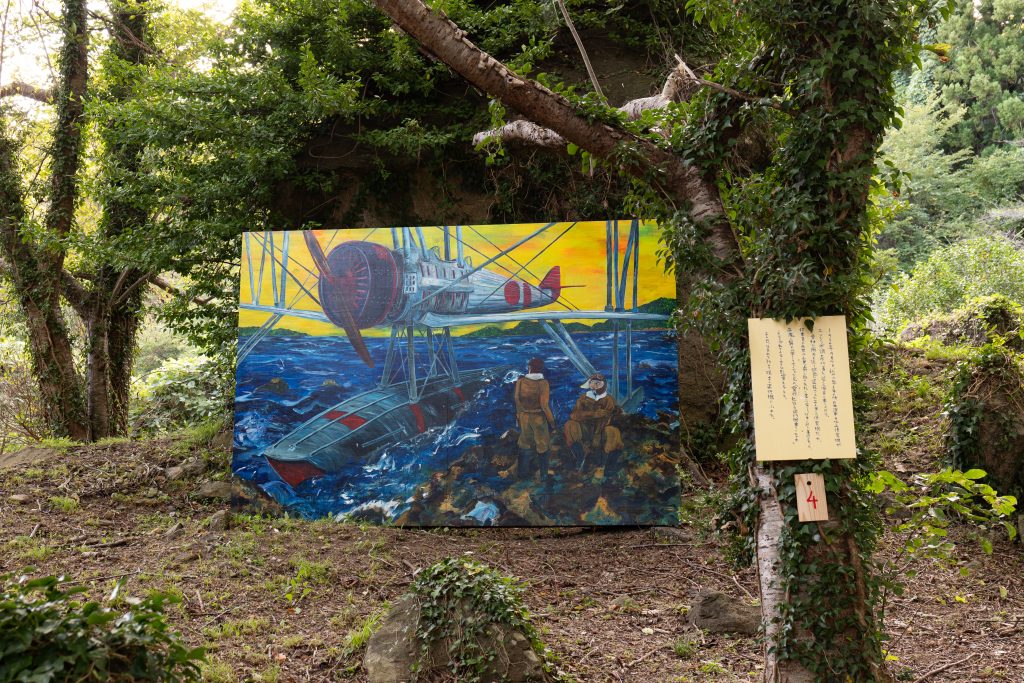
05
・Branch village pioneering advance team
Our village, which at the time was a designated village for rural rehabilitation, was naturally one of the first to participate in this national policy. The plan seems to have been promoted from around 1938 under the leadership of 畑中三郎※, the village mayor at the time, and the chairman of agriculture, 新徳太郎※, and agricultural advisor, 阿達精次※.
※Person’s name.
06
・NANPO Hosaku joins the advance party
In late March 1939, on the night I returned home from work, I received an order from 新徳太郎※ for the young people of Wanzaki to gather at MUKAI-san’s house. I attended without any prior knowledge. There, the current situation and poverty of the village was explained in detail, and a Manchurian frontier branch emigration plan was currently underway in the village, and they were looking for advance team members. He requested that everyone should participate in the project.
※Person’s name.
07
The young people assembled had all gone through a poor and rock-bottom childhood. It was with mixed feelings that I had to give up my childhood dream of becoming a naval officer, but when I was told that I could become a landowner of a 20-metre plot of land, I immediately made up my mind.
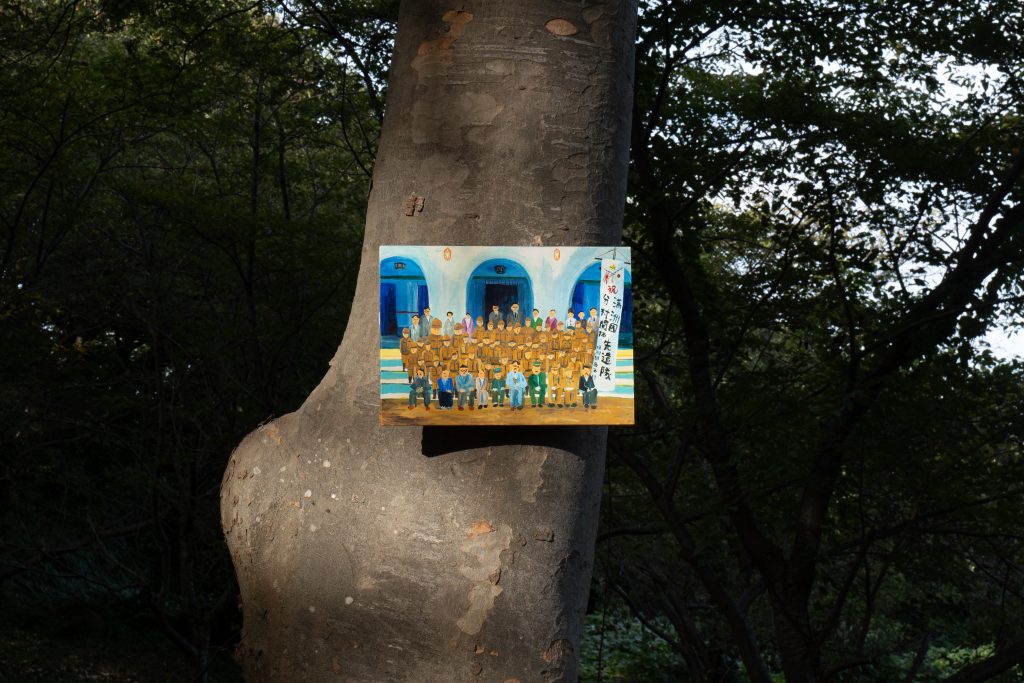
08
・Migration to Manchuria
On 5 June, after completing military-style training at the Tokuda Domestic Training Establishment, I attended a grand send-off party organised by Ishikawa Prefecture, and on the following day, 6 June, I attended a send-off party organised by the Ministry of Colonial Affairs. The quay at Tsuruga Bay, where the advance party was to be sent off, was overflowing with people, and hundreds of strips of five-colored tape connected those on board with those seeing them off from the pier, swaying in the wind.
At 4pm, the Kehi Maru ship with us left the quay and headed north at an increasing speed. Goodbye Japan.
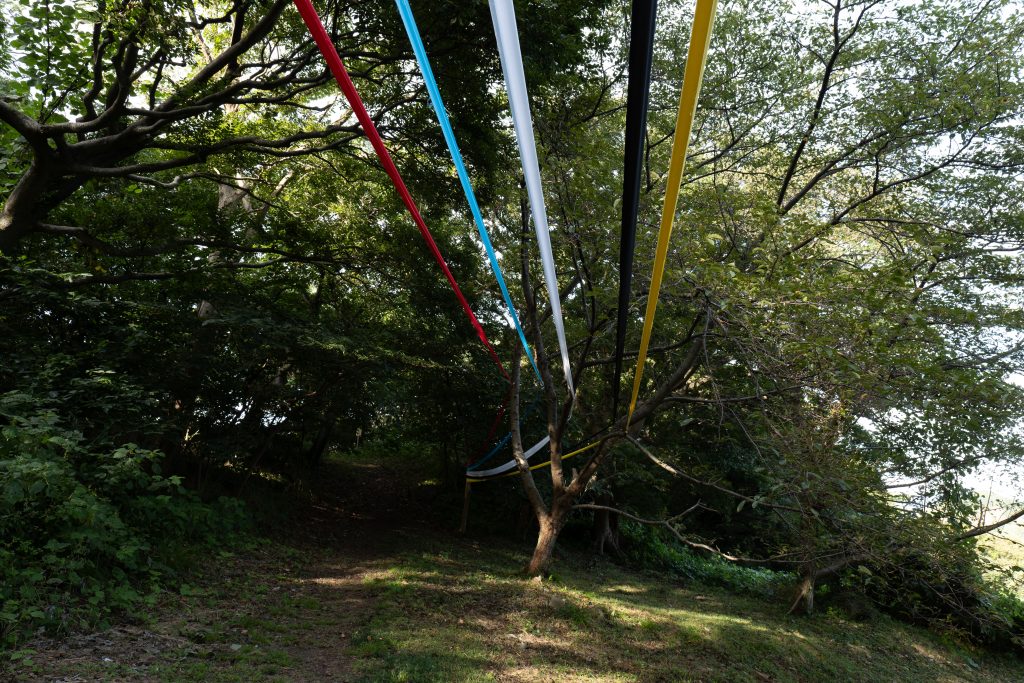
09
At 7pm on 10 June, they landed at Cheongjin Port in the north of Korea. Arrived at the 6th Kokusoshi Settlement, Hulin County, Dongan Province, via Tomun, Tokyo City, Mudanjiang River and Dongan Street.
10
・Entering the local training centre
At the Kokusohi Pioneer Training School, I was trained by agricultural instructor 辻本哲雄※, security instructor 関根捷雄※, Manchu language instructor 岡田龍吉※ and others. I was assigned to the Transport Department to acquire driving skills and, when I wasn’t studying, I helped with the transport of goods for the group and the delivery of goods to villages and individuals. The days were busy but quite enjoyable.
※Person’s name.
1 1
・Utopia
Three years after settlement, the Kokusoshi Pioneers had almost completed their headquarters, school, hospital, processing factory and other public facilities, and their private housing was almost complete, and they seemed to be steadily approaching the realisation of their ideal home. To the north-east is the Ussuri River, beyond which is Soviet territory. At night, the Soviet Union has electricity, but in Pioneers there were still only lamps.
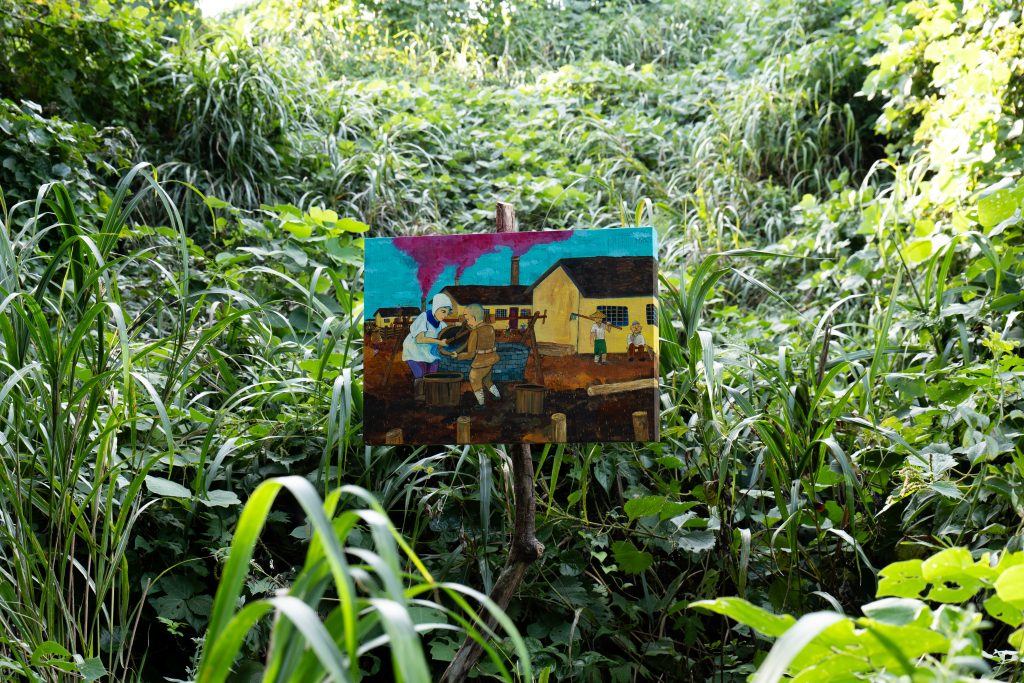
“KOKUSOSHI development advance team”
12
Mr.NAKAZAKI, an unlicensed driver, drove to Hulin station to pick up his luggage. While loading the large luggage at the station and driving home, he found more than a dozen members of the group on foot. Driver Mr.NAKAZAKI had them all in the truck and was speeding along in a good mood when, at a turn just short of the headquarters, he swerved without slowing down. The back of the truck suddenly floated away. The truck overturned, its full load thrown overboard and more than a dozen members of the group. In an instant, the scene was a scene of screaming devastation. I jumped off the back of the truck as quickly as I could and escaped injury.
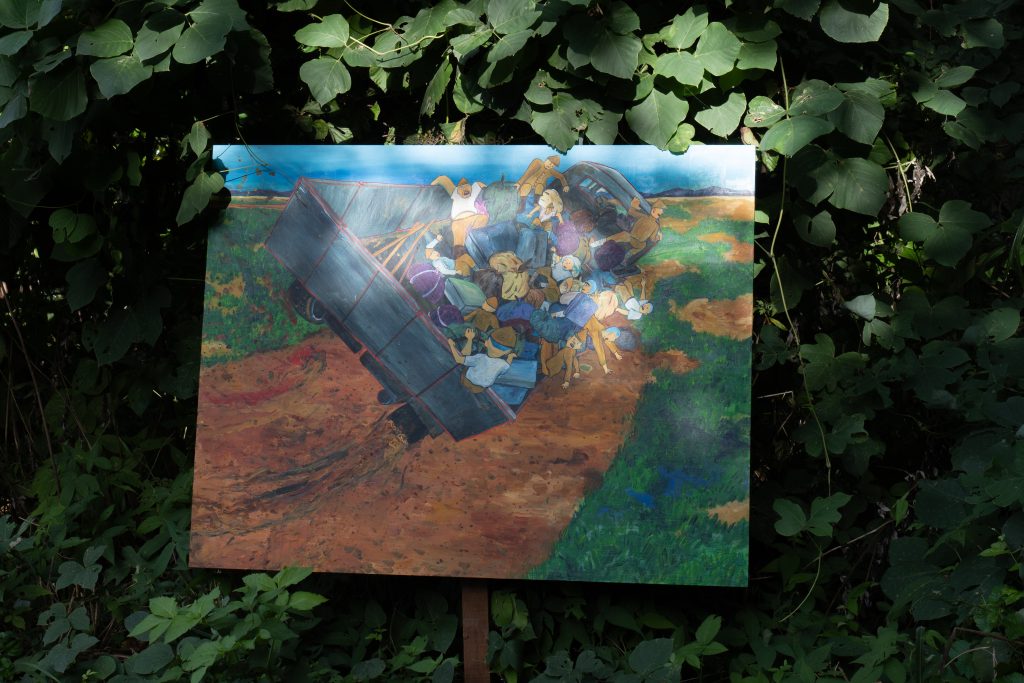
“Truck rollover”
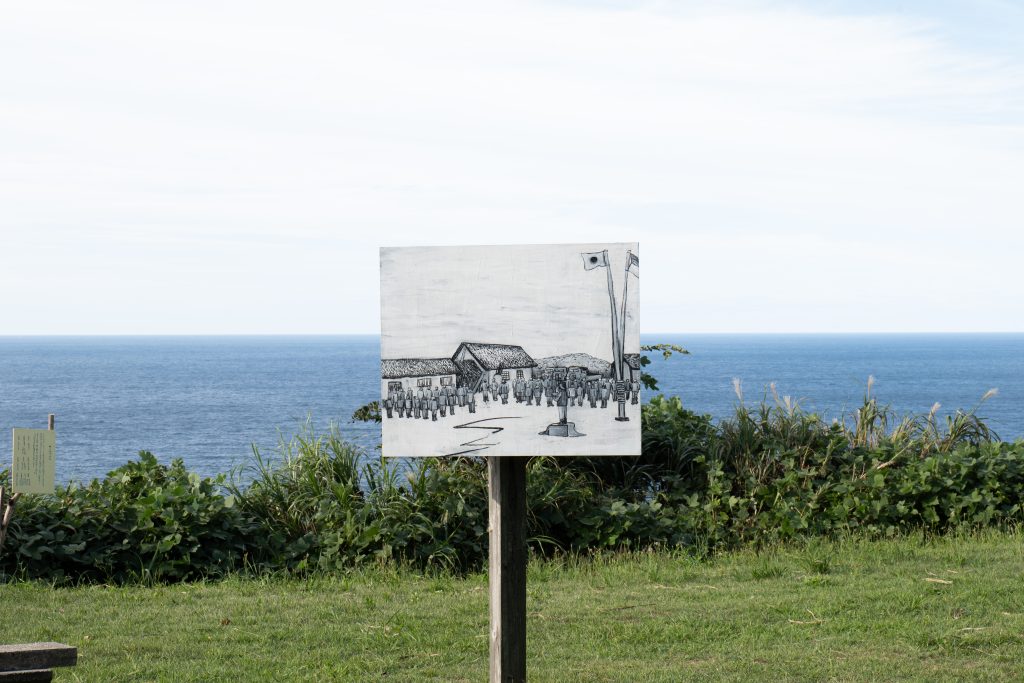
13
・Settlement decision
On 15 December 1939, our settlement in the Saikai Branch was decided to be in 浜江省巴彦県太陽地区※(Bayan County, Binjiang Province), and on 24 January we left the Kokusoshi Training School and went from Harbin via Bayan to settle in the dream new land, Huiyang Settlement. The executive structure of the first year of settlement was as follows.
Commander/ 大港専一
Agricultural advisor/ 小川達雄,大槻栄寿
Accountant/ 前家二三男
General Affairs/ NANPO Hosaku
Warehouse/ 寺矢穂作,坂本正義
Land and civil engineering/ 板谷寿松
Construction/ 中谷清作,増井勇
Diplomacy/ 宮根源内,前政夫
Agriculture/ 田畑才太郎,小浦長作
Transport/ 上宮喜一朗
14
・General affairs NANPO Hosaku
A total of 30 members of the second and third advance teams settled in the Huiyang Settlement. The location of the headquarters was decided and construction began at a rapid pace. At the training centre I belonged to the Transport Department, but at the same time as the settlement I was ordered by the Commander to join the office. I’ve just turned 17, and I have no office experience at all, so why ・・・・?
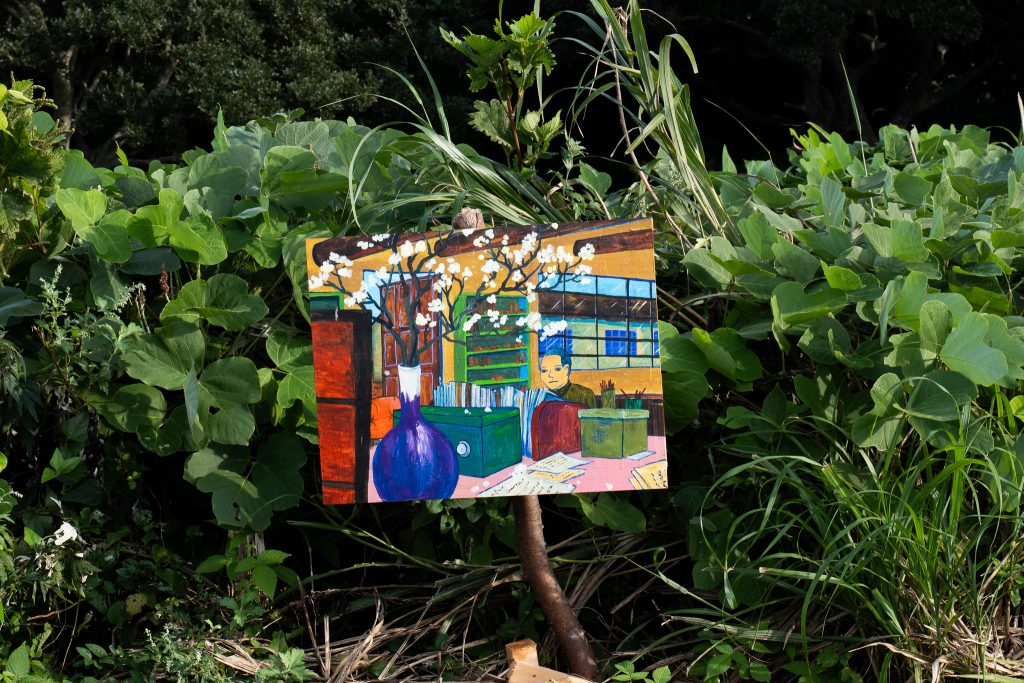
15
In the course of my work in general affairs, I sensed from the little information I had available to me the expansion of the front across the continent, the outbreak of the Second World War in Europe, and the confrontation between the US, Britain, the Netherlands and Japan. It was around this time that my almost forgotten dream of joining the navy began to come to the fore.
16
・Life in Manchuria
The construction of the Huiyang Settlement also progressed according to plan, with a headquarters, school, hospital and private homes. The paddy fields were also being worked on by members of the group under the leadership of Korean leaders. Young local women came to support the paddy weeding and I was in charge of paying their wages every day. The feeling between us and the locals was getting better day by day. The summers in North Manchuria are very short, but crops grow surprisingly fast due to the hours of sunlight. As soon as the autumn harvest is over, winter will soon be upon us.
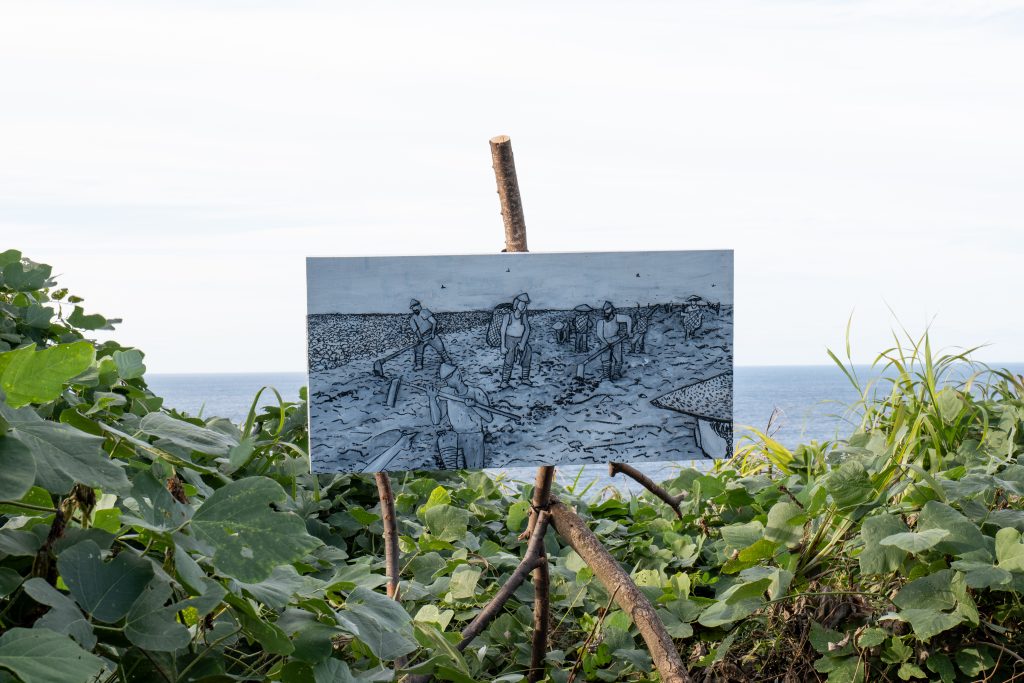
17
Just as the prospects for the pioneers’ lives were beginning to look brighter, the Sino-Japanese war was turning into a quagmire and I was feeling my own way about the situation surrounding Japan. It is absolutely unacceptable to evade military service. Draft checks were imminent. Knowing that it was an important time for the construction of pioneer villages in Manchuria, I decided to choose the dream I had had since childhood. I wrote a series of letters on letterhead saying that I had no choice but to appeal to the Commander. There were six sheets. What would the Commander think?
18
On 11 January 1941 I alighted at a rainy Kanazawa station, Ishikawa Prefecture. I was dressed from North Manchuria, but why did I feel shivering cold?
19
When I returned to my hometown, I met Sukekuro uncle. He said to me two or three times, “OTSUSAMA※, don’t invite people to Manchuria.” He was an uneducated man, but in retrospect he had good foresight. In those days, if you openly spoke out against such a thing, you were immediately branded an unpatriotic person.
※Means the third child
20
・Naval Volunteer Examination
The examinations for naval volunteers had finished in Suzu, so I went to the examination centre in Matto city.
I think there were about 50 examinees. There were about 10 who passed. I passed without incident. Nevertheless, it is too early to rejoice until we receive notification of employment. In late February, I returned Manchuria from Shimonoseki via Pusan. I waited for the notification of acceptance or rejection while doing paperwork in frozen North Manchuria.
I received the notice at the end of March. It was over the moon to finally realise a long-cherished childhood dream.
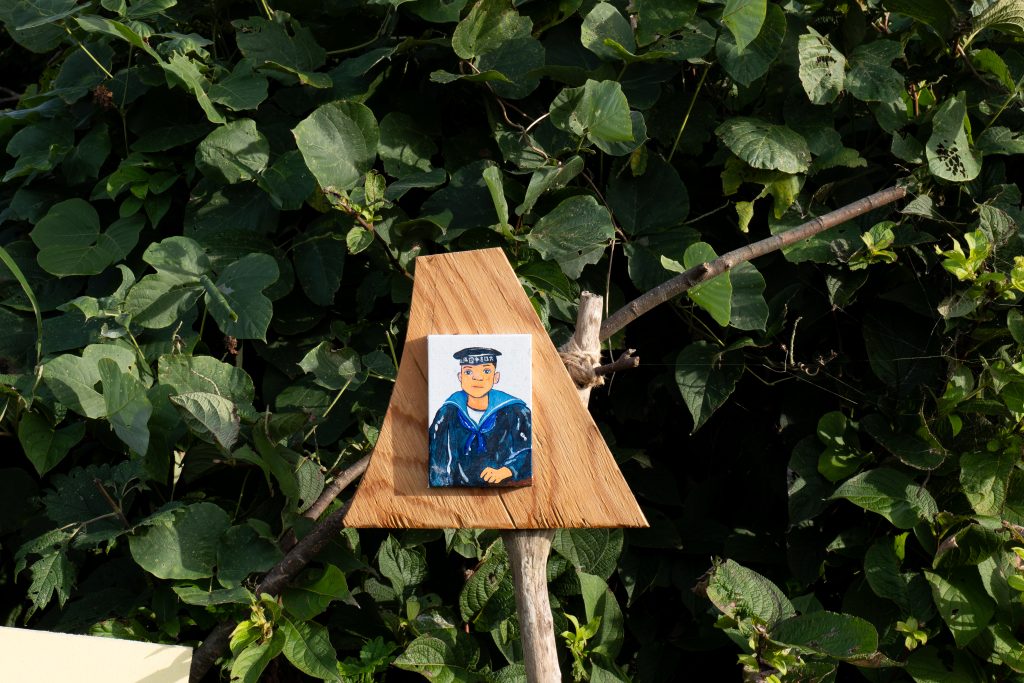
21
In April, the southerly wind blows over the land of North Manchuria. The members of the Manchuria settlement group are preparing for spring ploughing. During my two years of pioneering life in Manchuria and Mongolia, fortunately or unfortunately, I never had to swing a hoe and sickle. I was on my way back to Japan, regretting the last vestiges of the Huiyang Settlement, where I was used to living.
22
On 29 April, I was sent off by the villagers to enlist in the Navy. From Saikai village, there were two of us, myself and 角田※ from the Noroshi village. At night, we stayed at a hotel in Maizuru, Kyoto Prefecture, but I couldn’t sleep thinking that this was my last night in this world. 角田※ was three years younger than me and was a good young man of good physique. I heard that he was killed in action shortly after the outbreak of the Pacific War.
※Person’s name.
23
・Joining the Marine Corps
Joined the Marines on 1 May. I was commissioned as a naval seaman 4th class and was posted to the 12th squadron, 6th instructional group. The same manual training and land combat education that is the basis of military personnel is also the same in the Marine Corps. I was often puzzled because I had not received basic education.
Rowing is usually done with a cutter, in which ten men row the oars. NISHIMURA and I were at the tail end of the boat in strokes. The trick is to match our breathing with each other to make the boat go smoothly. If the oars don’t match, the captain immediately sends a rudder handle.
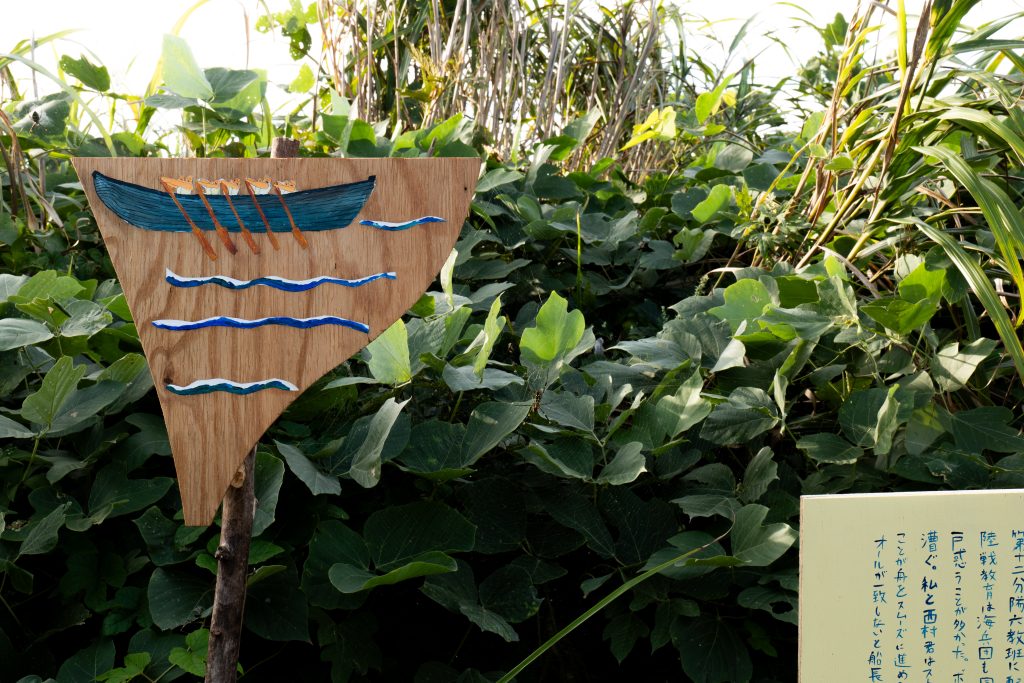
24
On 15 August, after completing the gruelling and rigorous training in the Marine Corps, I became a naval seaman third class and was assigned to the 2nd Defence Force. Having never heard of the 2nd Defence Force and knowing nothing about it, we knew recruits left Maizuru harbour, Kyoto Prefecture on board a ship bound for the southward.
25
・Kure Military Port
After hearing that the 2nd Defence Force, which had been difficult to find, was at Kure Military Port, we switched ships and turned back to the interior, and in mid-September we entered Kure. We saw for the first time the scale of Kure Military Port and its floating ships. A 10,000-ton first-class cruiser and the even more massive battleship Yamato were moored there.
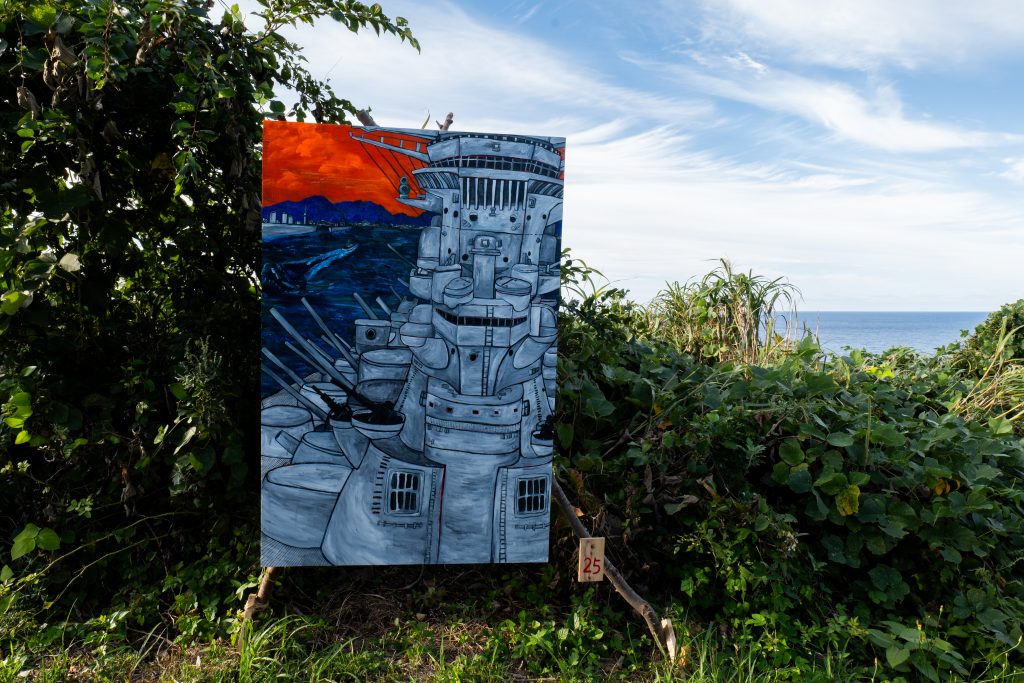
26
The full scope of the mission of the 2nd Defence Force units I enlisted in is now vaguely visible. Its main mission was to escort convoys, and during the voyage it deployed anti-aircraft guns at the bow and stern. When they reached the enemy landing point, they were to land in front of the enemy as soon as possible and protect the convoy from the enemy by installing anti-aircraft guns and surface guns.
The 2nd Defence Force Kenryu Maru ship conducted repeated training day and night on the west coast of Kyushu for lifting and setting up gun batteries, but as most of the work was done manually, it was accompanied by great hardship.
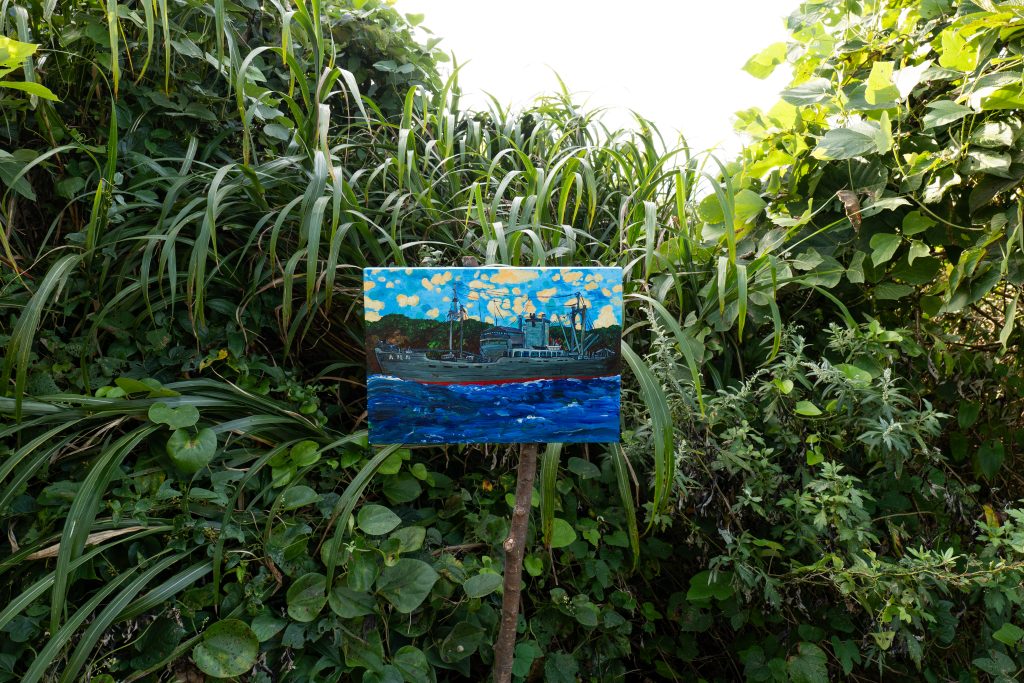
27
After completing the prescribed training, the 2nd Defence Force awaited orders to deploy off the coast of Kanmon. The very difficult situation in relations between the US, the UK, the Netherlands and Japan was weighing heavily on us.
28
・The eve of the outbreak of war
In the evening of 7 December, Colonel TEDZUKA Gorou, Commander-in-Chief, gave the order of General YAMAMOTO Isoroku, Commander-in-Chief of the Combined Fleet, to all forces. Tension ran through the entire force as the opening of war against the US and the UK was imminent. In which direction would we be deployed? As a junior recruit, I had no idea. I remember that it was similar to the high spirits on the eve of a primary school sports day.
29
In the early hours of 18 December 1941, the military moved in response to the attack on Pearl Harbour, Hawaii, and the Kenryu Maru ship in Magong (Taiwan) was finally ordered to go to sea at dawn. As the island of Taiwan disappeared into the horizon, a large convoy of 100 transports and 90 escort vessels gathered at sea, heading southwards, and the Kenryu Maru ship was positioned at the tail end of the convoy. When I looked at the surrounding vessels in the distance, I firmly believed in Japan’s undefeat.
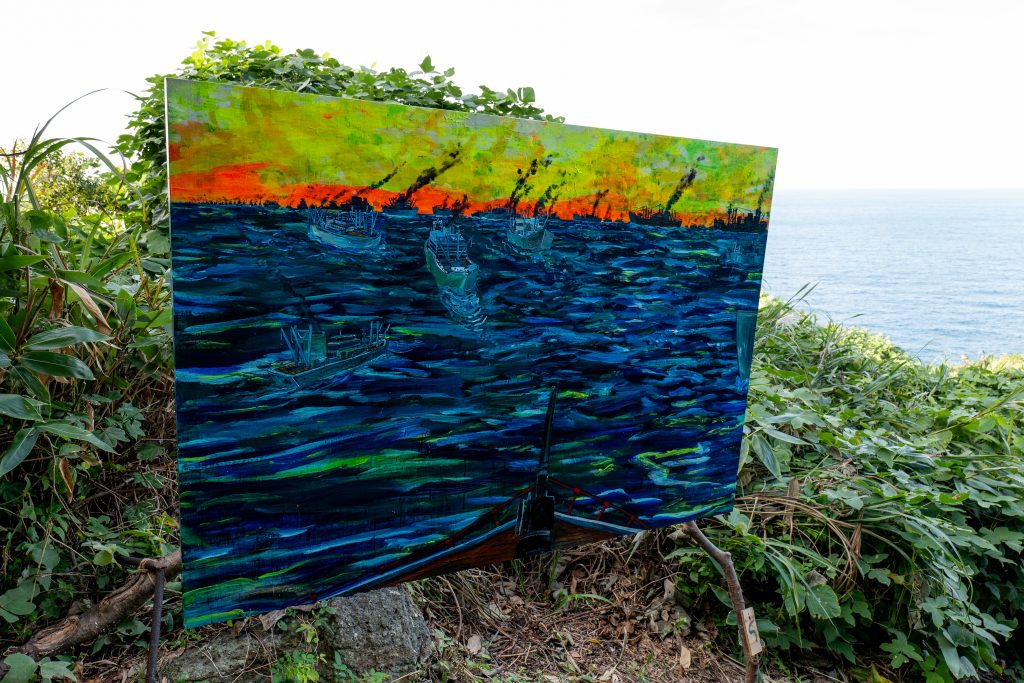
30
Who could have thought that most of these vessels would be reduced to seaweed on the seabed in a few years’ time? I don’t think I would have known.
31
On 24 December, we entered Lingayen Bay in the Philippine Islands. The coast of Lingayen is an endless stretch of sandy beach reminiscent of the Kaga coast, Ishikawa prefecture. Landed batteries are set up on high ground. Enemy air bases at Nicholas and Clark were almost completely destroyed, but there was high-altitude bombardment by enemy aircraft flying in from somewhere. Each time, the anti-aircraft guns of the 2nd Defence Squadron opened fire. There was almost no damage from the bombing, but later we heard that several ships were sunk in submarine attacks.
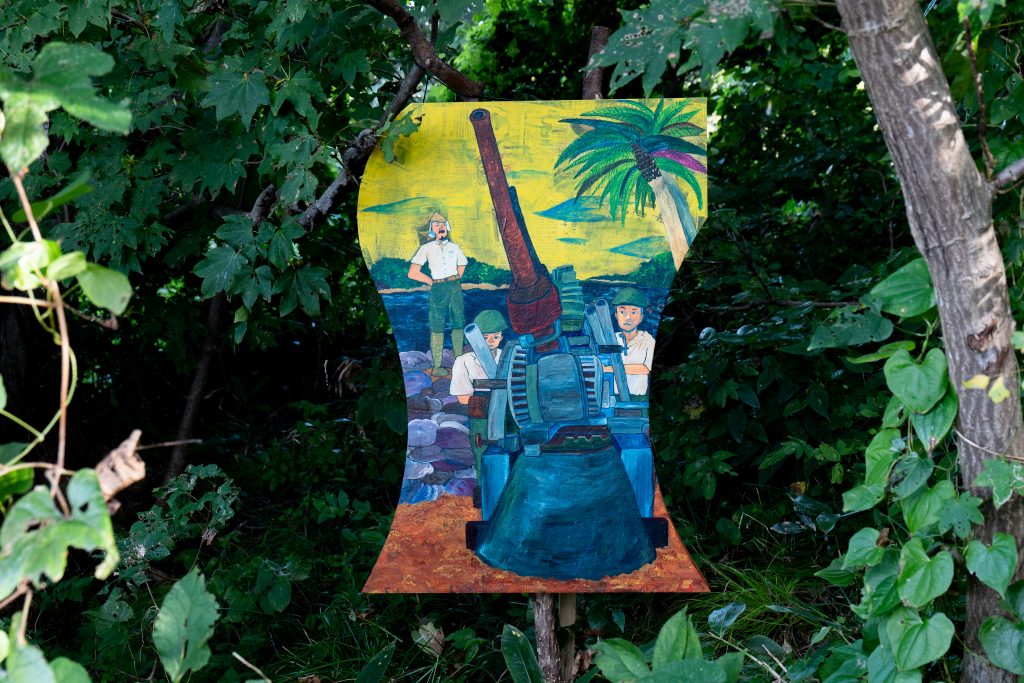
32
We celebrated New Year’s Day 1942 in a mouldy cabin. I don’t remember if we had Ozoni or not. Day after day we sailed at the tail end of a convoy across the calm South Sea. The days were so peaceful that one might wonder if this was war. Occasionally a Type Zero fighter would fly overhead, escorting the convoy. They would fly backwards, roll over, somersault and perform other advanced manoeuvres in the absence of enemy aircraft and disappear into the sky. I had not yet given up my dream of flying, and I felt miserable as I crawled along the sea.

33
On 8 January, they arrived at Tarakan Island. The land forces landed from the rear of the island, taking the enemy by surprise, and in just two days the enemy surrendered in full. At the same time, the Kenryu Maru ship was hit by a Dutch air raid, and four bombs landed in the sea, shaking the ship and injuring several men. Countless fish were sacrificed on our behalf and rose to the surface.
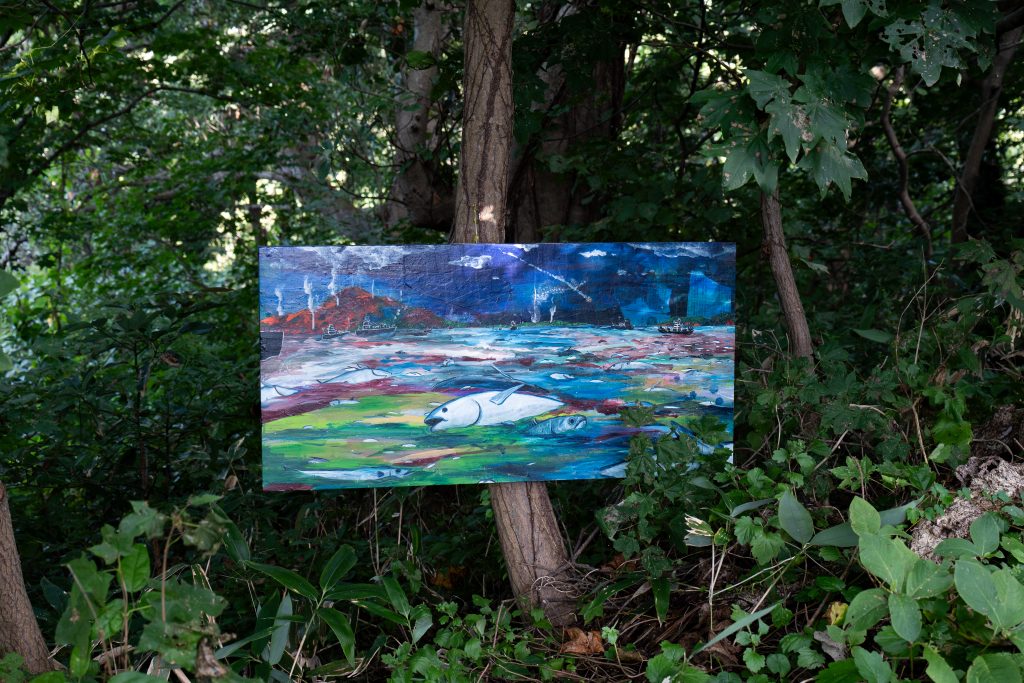
34
・Java sea snakes
The next operation seems to be in Java. Countless sea snakes about one metre long were swimming on the calm sea surface, their black-and-white striped bodies wriggling. Then an even more bizarre sight caught my eye. It was people, people, people drifting. They were soldiers of the Allied Forces who had been sunk by our troops in the Battle of Surabaya the previous day. They were floating in lifejackets, waving white cloths and calling for help. War is an impermanent thing. Abandoning these men, the fleet continued southwards. I can never get that red, burnt white man’s face out of my mind.

35
The convoy arrived in central Java late at night on 1 March. Allied resistance was fierce and torpedo boat raids, bomber attacks, ground bombardment and gunfire continued until dawn. Our forces responded and Army units began landing in front of the enemy. Searchlights tracked torpedo boats and captured aeroplanes overhead. The machine gun tows were like fireworks. I thought this was modern warfare. The Kenryu Maru ship was bombed from low altitude but again escaped being hit. At dawn the enemy resistance was almost gone and we were the first to land and set up the gun batteries of the ship’s escort.
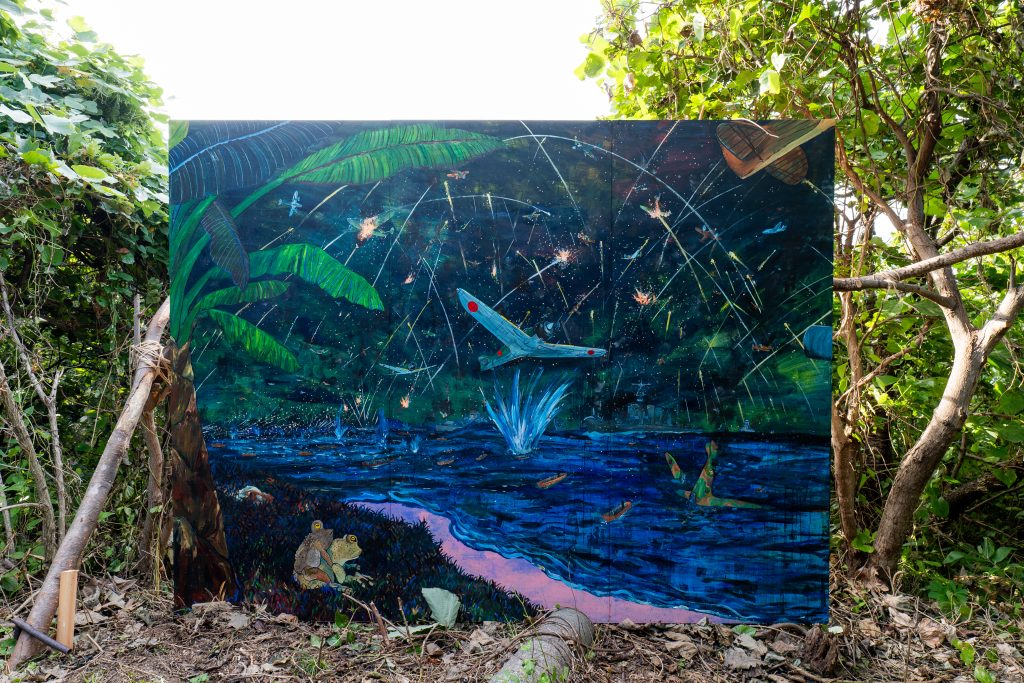
36
After seven months of familiarisation with the Kenryu Maru ship, the Ann-style (British Armstrong) high-angle guns, Commander TEDZUKA and Squadron Leader KAWASHIMA, we landed at Balikpapan and became members of the 22nd Special Base Samarinda Dispatch.
37
With 50 POWs in two military trucks confiscated from the Dutch Army, we went to cut grass at an airfield in the backcountry. I accompanied one of them as security, carrying a Type 38 infantry gun. I gave them cigarettes, a war supply, and chatted with the enemy soldiers, with whom I could not understand a word. It was a moment in the rear position.
38
On 18 April, the first air raid on the Japanese mainland by US planes shocked the nation, which was in a victorious mood.
39
・Battle of Midway
On 5 June, in Operation Midway, Japan suffered a crushing defeat, losing the aircraft carriers Akagi, Kaga, Hiryu and Soryu, 300 aircraft and hundreds of well-trained, highly capable crewmen, and from then on air and sea control fell into enemy hands.
40
Standing on patrol on the banks of the Mahakam River, gun in hand. In Borneo, so close to the equator, the North Star is not visible. In the tranquillity of the rear camp, I gaze at the falling starry sky and get sentimental.

41
Several Dutch POWs stole weapons, ammunition and food and fled into the mountains. With the help of the Dayak Tribe, they destroyed the fleeing Dutch soldiers holed up in a mountain hut. In recognition of their merit, the Dayak tribe was to bring salt and clothing and travel back to a point 200 km upstream on the Mahakam River.
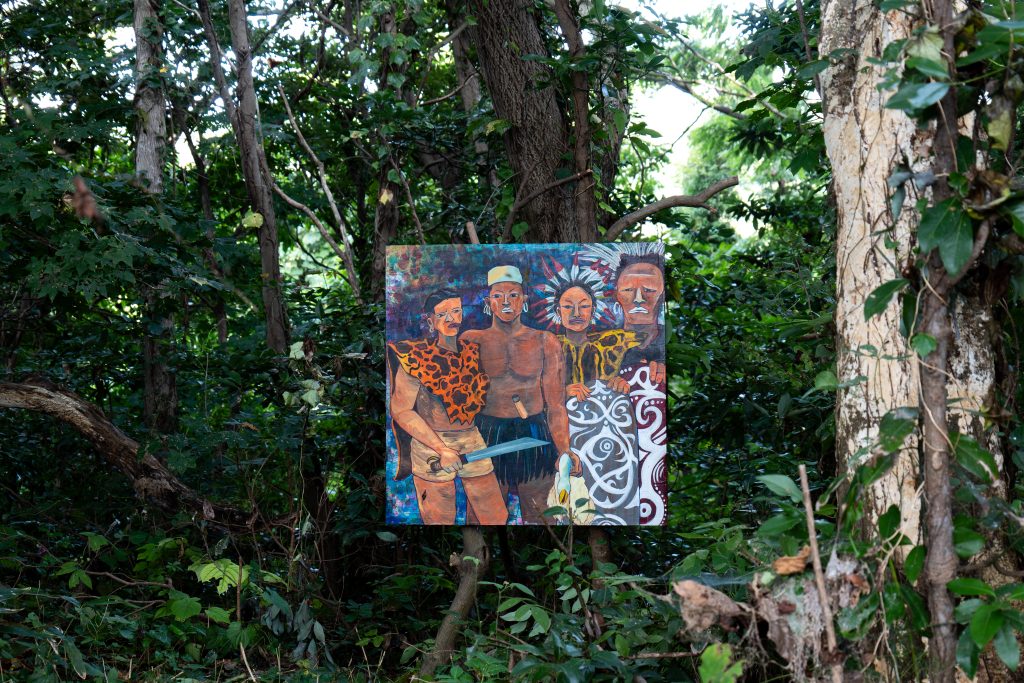
42
During the four-day outward journey up the Mahakam River, they encountered large groups of monkeys and giant crocodiles in the jungle, giving them a rare experience of nature in the interior of Borneo.

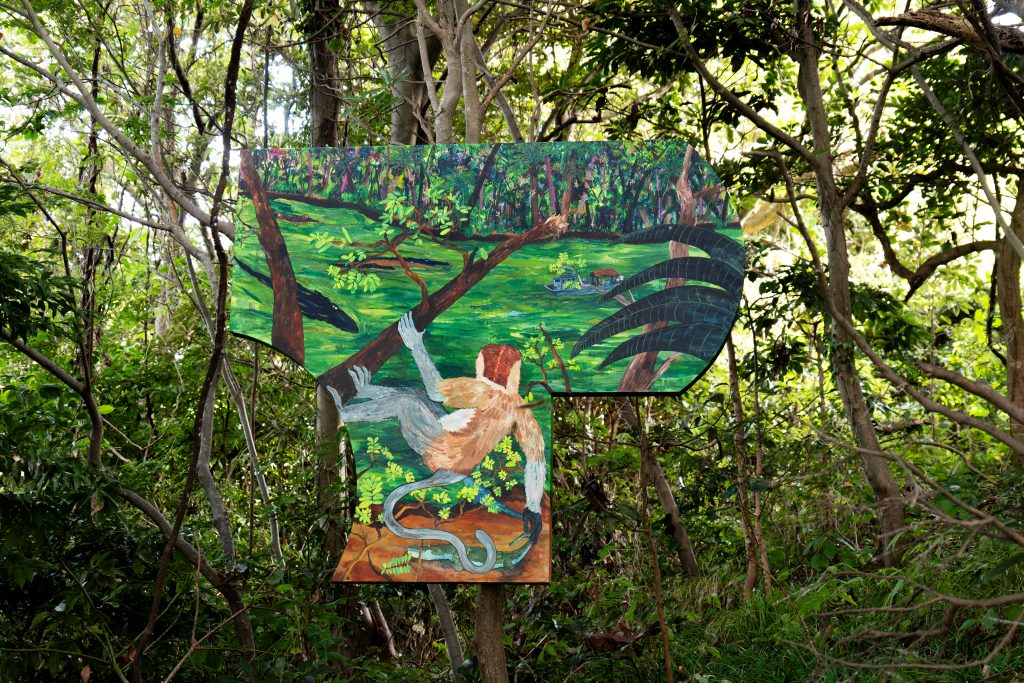
43
・Feast of the Dayak people
The Dayak are a people who, even during the Dutch colonial period, established an autonomous region deep in the jungle and have maintained their resistance to the Dutch army. After receiving the award, the entire village of the Dia people welcomed us with open arms that night. They served us doburoku (unrefined sake), which they had made, and performed a dance called Gandas, which has completely different choreographies for men and women. It has a similar feel to the Awa Odori dance in Tokushima. The dancing continued throughout the night, taking the hands of those of us watching and inviting us to join in the dancing circle. It was a monotonous dance, but it was full of enthusiasm.

44
The Chief Military Medical Officer, Lieutenant NAGAI Masatoshi, was appointed to the post and I was ordered to serve in the army. From then on, I was to live with the Chief Military Medical Officer and act as acting nurse on ward duty. For the next five months, as an assistant, I assisted with various treatments, including eye and ear examinations, treatments and injections (intravenous and subcutaneous), with a reflector on my forehead, but I was very reluctant to wash the bladder of a gonorrhoea patient.

45
Just as I was getting used to being a quack, I received word that the various trainee recruitment exams were to be held for us unmarked soldiers. This was the first long-sought opportunity that came my way. I thought it was a shortcut to becoming a flight crew member and took the trainee maintenance trainee exam without hesitation.
46
・Return home
I said goodbye to the Chief Medical Officer’s Corps and left the Ponchak detachment and returned to Japan for the first time in two years. He joined the Sagamino Naval Air Squadron in Atsugi, Kanagawa Prefecture, after a two-day train ride from Sasebo. I was overwhelmed by the large number of crew members who had experienced the Battle of Hawaii, the Indian Ocean campaign and Midway, and I had been spoilt by being an enlisted man on the ground. I told myself I had to get into it and devoted myself to studying aircraft, which were ahead of their time.
47
My previous experience had given me some confidence in car engines, but nothing compared to aero engines, which consist of 20,000 parts. The course covers the physics, principles and theory of flying heavier-than-air objects, airframe construction, control systems, aeronautical instruments, engine construction, power instruments and meteorology. After six months of training, I volunteered to become a flight engine mechanic.
48
It was only a few days later that I was told by my team leader that I would be employed as a flight engine mechanic. I had taken a long detour, but it was the moment when my childhood wish was finally fulfilled.
49
On 18 April 1943, General YAMAMOTO Isoroku, Commander-in-Chief of the Allied Fleet, was killed in action over Bougainville.
50
The news of defeat continued with the retreat from Guadalcanal and Kiska, the crushing of Attu Island, Tarawa and Makisi. After completing ground training at Sagamino, the aircraft moved to Kanoya Air Base, Kagoshima Prefecture, for overhead training.
51
・First flight
The Kanoya Air Squadron was a base for large aircraft, with Mitsubishi G4M and Mitsubishi G3M aircraft parked in cramped spaces. Unlike small aircraft, large aircraft had a team of four pilots, a reconnaissance man, a telegraph operator and a flight maintenance man. The first flight was a Type 96 land attack aircraft on a sunny day in early February.
52
The aircraft left the ground in a absorb. The flaps and legs were operated, the fuel cock was switched and the engine was checked for condition. I sat in the co-pilot’s seat and constantly diagnosed the aircraft by instrumentation for any unusual vibrations or oil leaks. It is the duty of the onboard maintenance crew to ensure that the aircraft and engines are in good working order.
53
It is true that I was somewhat unsatisfied because it was different from my childhood dream to fly with my own hands on the controls, but I finally took to the skies.
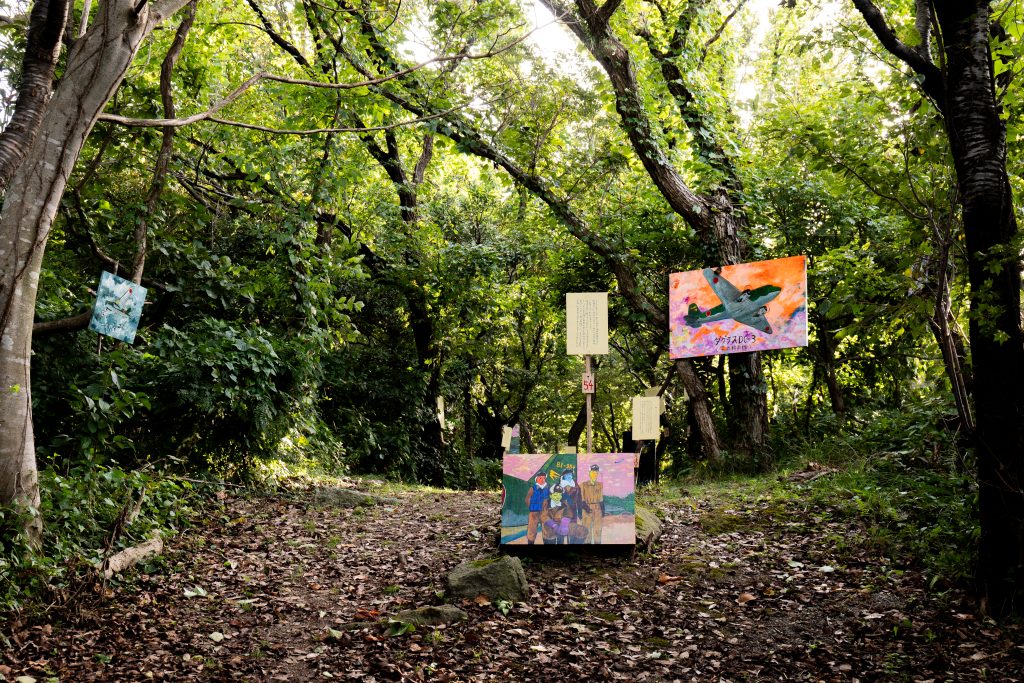
54
At the end of March 1944, I completed the training course for the 27th Large Aircraft New Crew Special Trainees and was ordered to transfer to 1081st Air Base, Atsugi, Kanagawa Prefecture. The unit was commonly known as the ‘Swallow Unit’ because of the swallow symbol on the vertical tail. The Atsugi Air Force was a newly established transport aircraft squadron living together with the Tokyo Defence fighter squadron. This was a major crossroads in life, and many of those assigned to the attack squadron at that time never returned.

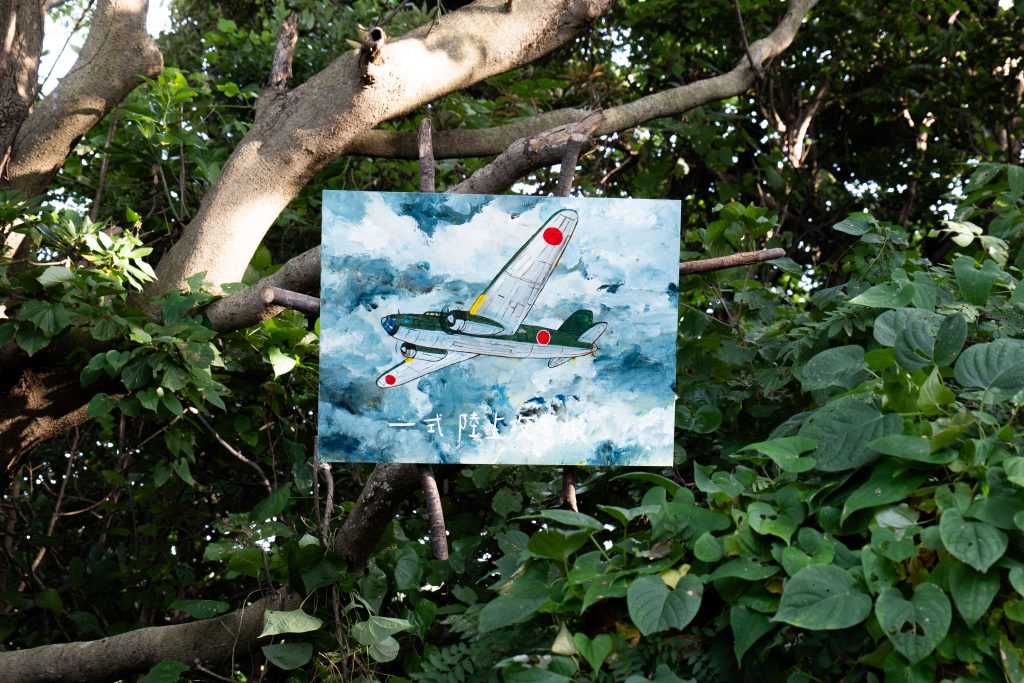

55
On 17 July, the entire Saipan Island garrison was crushed. The US landings on Guam and the counter-attack in quantity were intense, and our convoys were engaged in day and night flights to supply the front line, support withdrawal operations and rescue aircrews. Missions to Borneo, Philippines Island, Taiwan and Iwo Jima. And scheduled flights to Hokkaido, Shikoku, Kyushu, Okinawa and Shanghai.

56
・Douglas DC3 type
Having lost control of the sea and airspace, the mainland’s maritime airspace had to be flown under a barrage of enemy aircraft. Mitsubishi G4M and Mitsubishi G3M were equipped with weapons that enabled them to fight to some extent, but the Douglas was completely unprotected and not even equipped with paratroopers. If an enemy aircraft encountered a Douglas in flight, it would be shot down in no time at all. A number of Douglas were thus left unreturned.
57
My younger brother, Yousaku, who was a member of 762 Naval aviation, found a Swallow-marked aircraft parked on the ground and came to see him. He asked me what he should do with the money he had, and I said: ‘We don’t have long to live, so play with whoring and make memories for the rest of your life’. Later, the 762 Naval aviation was ordered to attack the enemy task force and sailed out.
My brother did not return from the Taiwanese coast; he was 18 years old.
58
The first aircraft was the 96 Land Attack and the second was the Douglas. I am on board the Douglas. We had been out of Kyushu for four hours already, but the weather was so bad that we lost sight of the first aircraft and lost track of where we were flying now. I told the captain that we had less than an hour’s worth of fuel and asked him to set a course to the west, prepared for an emergency landing. If we flew west, we would find the Chinese mainland. After another 40 minutes of flying, the coast appeared in front of us like a folding screen. We headed south along the coast, which turned out to be the coast near Taitung, and landed in Tainan, two hours behind the first aircraft. The fuel gauge showed zero.
59
Five hours out of Taiwan, I should be at the southern tip of Kyushu by now, so I want to reduce altitude and get to sea level, but if I enter the thick cloud cover even a little, the spinner wing front green will freeze in place. The temperature must be very low. We can’t get into the clouds, but we don’t have the fuel to turn back. The telegraph operator asked about the weather conditions at the various bases, but it seems that none of them are good. Just when everything was going wrong, they spotted a fault line in the clouds running from east to west. The thick cloud was split in two like a piece of tofu cut from the sky to the surface of the sea. I flew through the rift, dropping altitude rapidly. The breaking waves on the sea surface could be seen in the distance.
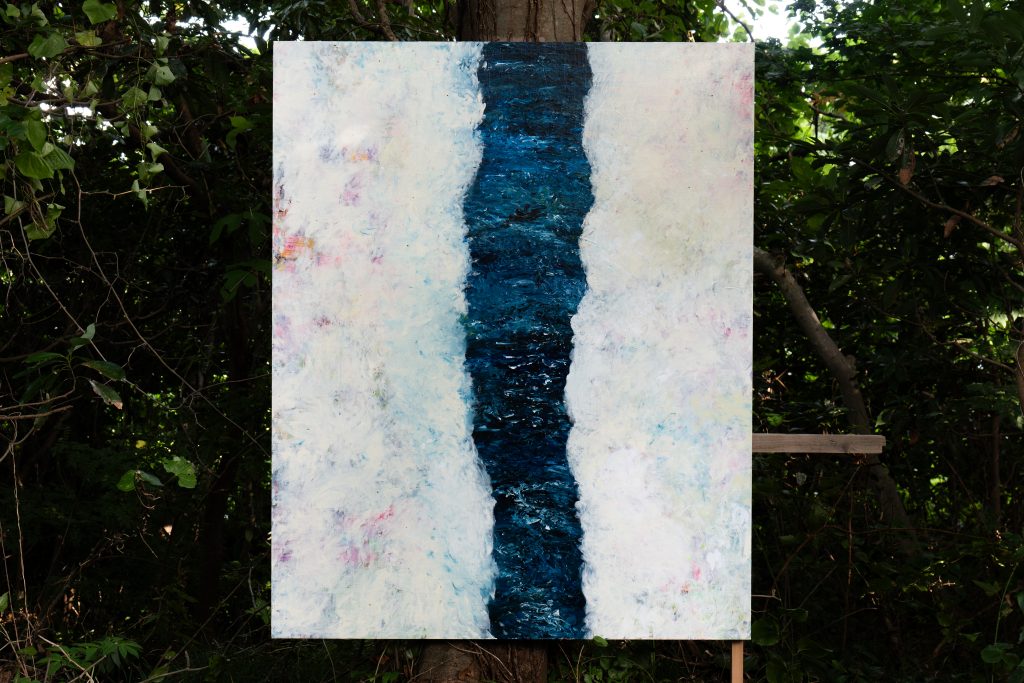
60
・Ground wreck of the reconnaissance aircraft
Around August, we were doing maintenance work on No. 2 Douglas, parked on the grass off the runway. Suddenly, there was a strange metallic sound, and a training Type 1 Land Attack, which had failed to land, slid down the runway, leaning to the left. The aircraft crashed into the first aircraft undergoing maintenance, which rotated 180 degrees and broke both legs. The training aircraft was badly damaged. We ran towards the first aircraft. When we entered the aircraft, Petty Officer TAKEUCHI and Petty Officer 星名一飛※ were stained with blood and unconscious. Petty Officer NOGAWA had escaped on his own. The trainees were carried out of the messily damaged training aircraft.
※Person’s name.
61
Flying a metal object is possible when drag, thrust, lift and gravity are in balance. If this balance is disturbed even slightly, the aircraft will fall. Swallow units are always flying long distances and are greatly affected by weather and climate. In-flight breakdowns are common. They have to rely on instrumentation to detect malfunctions in advance and take applied action. The sky is a constant source of tension.
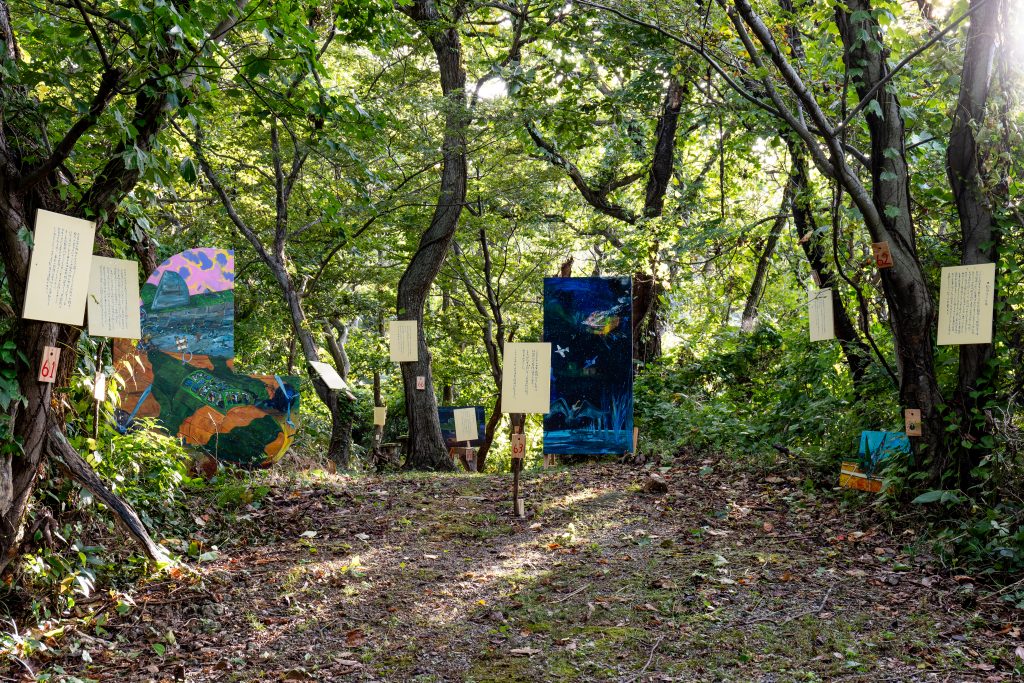
62
・Maintenance crews.
A Type I Luftwaffe took off with 16 passengers on board. It was piloted by a reserve student and serviced by two sergeants MAEKAWA. When climbing at the end of the runway, both engines suddenly stopped. The aircraft was at a low altitude immediately after the leg raising manoeuvre, and it appears that the emergency landing manoeuvre was attempted as soon as possible. After the emergency landing, the aircraft skidded across the rice paddies, cleaving utility poles and pylons, and the left wing turned in a figure of a bow and fell into the river, where it came to a halt just as if it had been bridged. Petty Officer MURAKAMI and Petty Officer HIGUCHI were reportedly so badly injured that their skulls were visible. The cause of the accident is thought to have been negligent pre-flight maintenance. I have not seen Petty Officer MAEKAWA since that accident. He has not been a member of the War Alumni Association, nor has he been mentioned in any of the rosters. He was one year my junior.
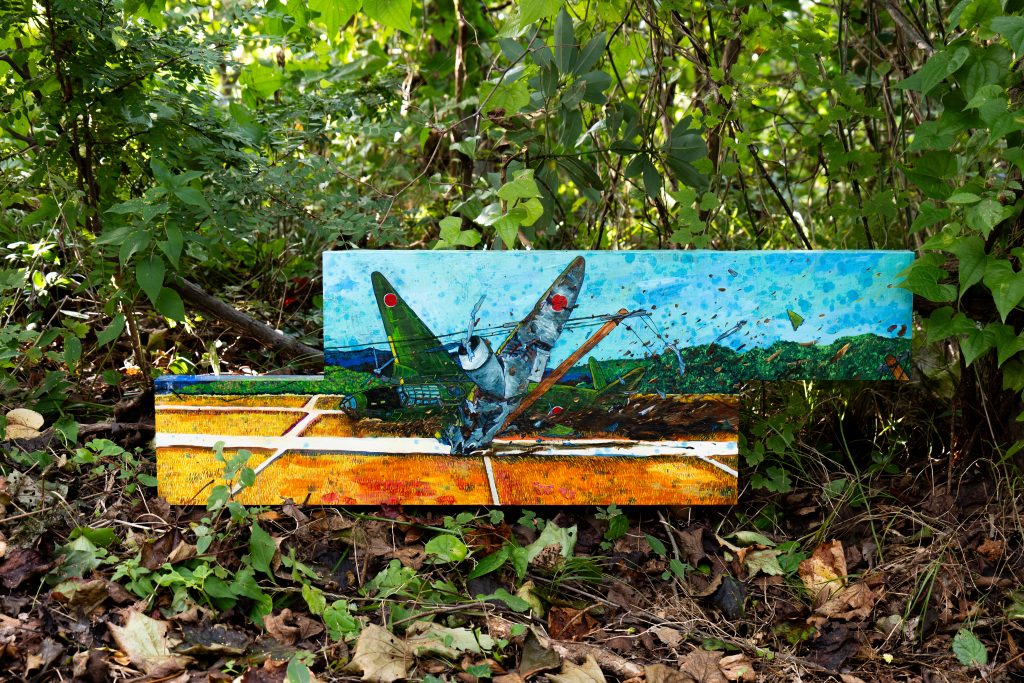

63
On 20 October, Commander-in-Chief 大西 of the 1st Fleet issued the formation of the Kamikaze Special Attack Squadron, and on 25 October, 18 suicide planes under Captain 関行男 hit enemy aircraft carriers. The Imperial Japanese Navy was decimated in the Battle of Leyte.
64
A Douglas piloted by Petty Officer NOGAWA encountered and shot down by enemy aircraft over the waters off Cape Shiono. If the enemy spotted Douglas, who was defenceless, there was nothing more he could do. He and I were one of the few people in my class who flew together, and we have many episodes of flying as a team, including a ground accident in Kaohsiung, Taiwan.
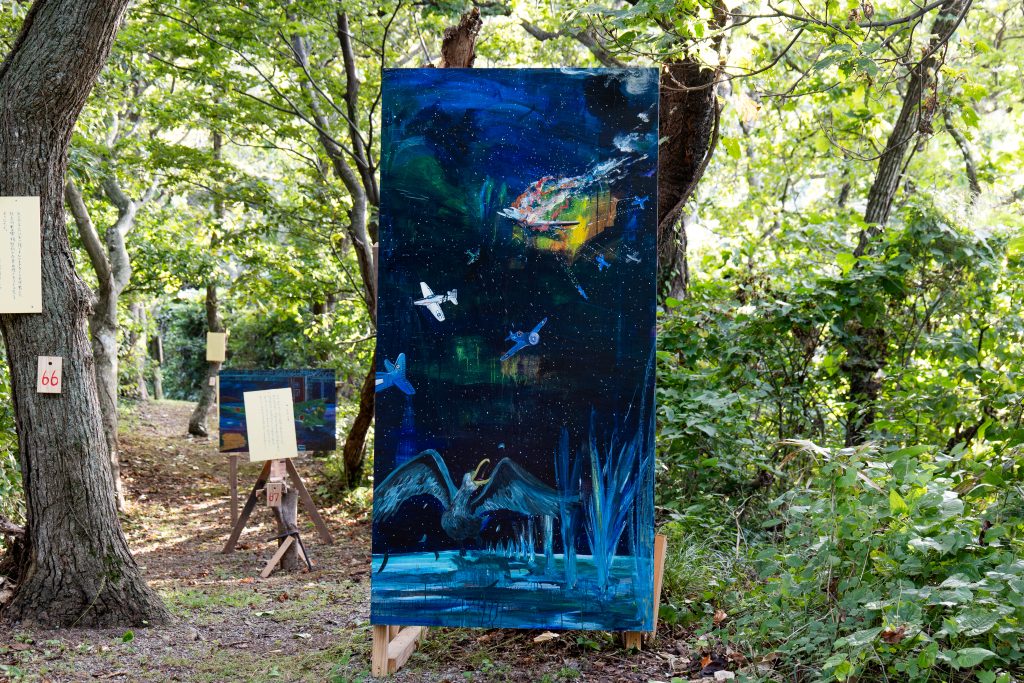
65
Petty Officer 豊田 had the appearance of an ancient samurai, a boxing-trained body and the fervour of a melancholy man. One day, a general assembly of the entire flying squadron was called. I was wondering what was going on, but Petty Officer 豊田 had a stick in his hand that was infused with the military spirit. He said: “What do you people know about the war situation? You are all lacking spirit!” The hexagonal stick made of oak wood groaned as it bit into our butts one, two, three times.
66
We soldier of the same age received ten thankless rounds and never thought that the deck lineups of our recruitment days would ever be reenacted. Petty Officer 豊田 was commissioned as a commissioned officer in November 19, but around April 20, in the depths of defeat, he committed suicide by shooting himself in the officers’ mess, fearing for the future of Japan.
67
・Daydream
Last night, the flight assignment was announced as Kaohsiung, Taiwan. During a trial run at dawn, one aircraft broke the silence of the airfield with a roar of explosions. I reported the captain that the test run was good and the aircraft was ready for departure. The sky had not yet dawned and the eastern sky was white and clear in autumn. Both engines left a pleasant sound on the runway and continued to climb.

68
All instruments are in working order and there are no concerns. After completing the flap and leg lifts, a visual check is made through the passenger window to see if there are any oil leaks in the engines. No abnormalities in the left engine. The bright red sun is peeking out of the horizon over the Pacific Ocean, cutting through the water.
69
Next, I went to check the right engine. Through the passenger window, I could see Mt Fuji shining in the morning sun over the engine. What a beautiful Fuji! I was doubting myself as if it were a dream. The Douglas has now completed its climb to an altitude of 4300 metres and is now in level flight, heading towards Cape Shiono. The skirts of Mt Fuji were lost in the purple clouds. My intellect has neither the letters nor the words to describe this natural beauty. All I can do is just stare in awe.
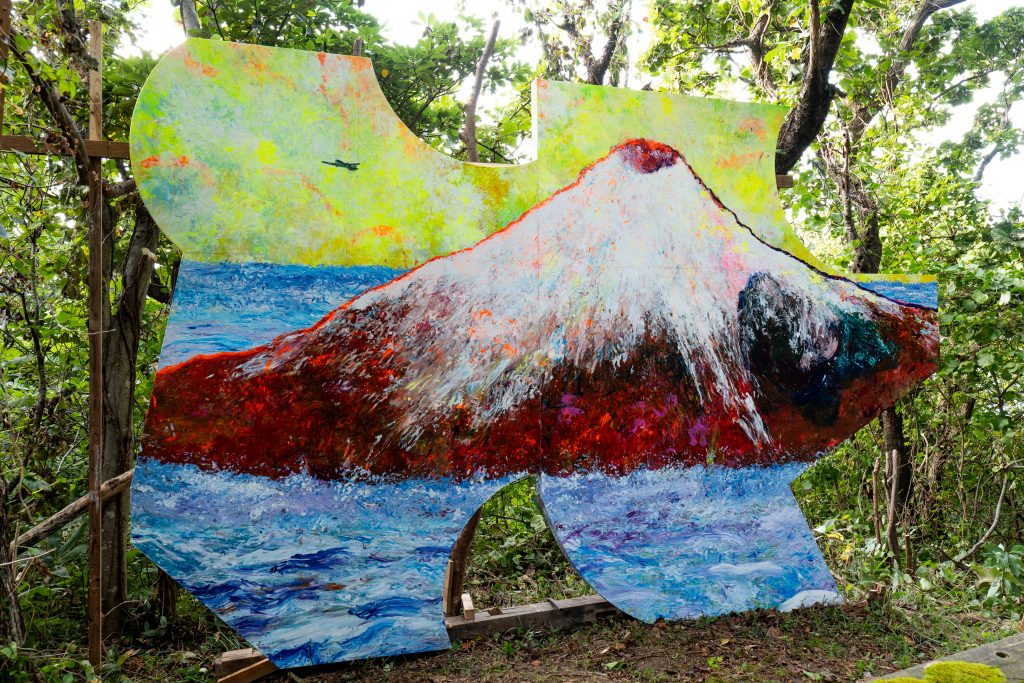
70
Unaware that I alone am admiring a sight worth 10,000 gold pieces, the scouts and telegraph operators are concentrating hard on their own duties. If I had been a painter, what masterpieces would I have left behind? If I had been a photographer, how many shutters I would have snapped. The sun is gradually rising and the plane is flying towards its destination. Those few minutes were like a daydream.
71
On 10 March 1945, the US Air Force bombed Tokyo. About 120,000 people were killed in the indiscriminate bombing.
On that day we were sent to the Showa Aircraft Works to test a new aircraft.

72
In April, the US forces landed on Okinawa, and on 23 June the garrison was completely wiped out, with 90,000 killed in action and 100,000 civilians also killed, and Okinawa fell completely into enemy hands. New aircraft were produced and trial runs and test flights were repeated every day.
73
Boeing B-29 Superfortress flew daily from Saipan, Tenyan, Iwo Jima and China, bombing the Japanese mainland. Large cities were scorched to the ground and the Showa Aircraft Works was the target of attacks.
74
On 23 July, the day finally came for those of us in the Showa Aircraft Dispatch Team. We were ordered to assemble at Kabayama Air Base in Aomori Prefecture with our aircraft. When we arrived at Kabayama Airbase, we found that several aircraft from various bases had gathered there, including the Mitsubishi G4M, Mitsubishi G3M and Douglas.
75
・Peng Special Attack Force
Both the Navy and the Army were thinking of a suicide mission of some kind, and we were organised into the Peng Special Attack Squadron. The captain was Captain 田村倉由, a reserve officer, who opened his speech by saying: ‘Japan is at a critical crossroads between national survival and death. We thought that the Kamikaze attack squadron was something noble and out of reach for us, but we must train with all our hearts for the immortality of land of the gods, Japan”. These were the above instructions.
76
From Kabayama Air to Bihoro 3rd Air. At sunset, they went to the aircraft for night navigation training at sea. However, the training did not take place without a stitch of disruption. Some skipped on the pretext of illness, others complained about the food and formed a clique to hit the top, while others scribbled swear words. Not all of them are necessarily willing to go on Kamikaze attacks, but they are hereby order from above, regardless of their own will, as a matter of course.
77
The targets of the attack force have been communicated to everyone. Under cover of darkness, the plan was to load 35 men each into a one-way fuel-carrying transport aircraft, each carrying six hand grenades, a Japanese sword and a pistol, and after a forced landing at the enemy base, to storm in and blow up the Boeing B-29 Superfortress. It was a reckless operation, to be carried out on 18 August.
The crews were prepared to do as they wished.
78
6 August Atomic bomb dropped on Hiroshima.
9 August Atomic bomb dropped on Nagasaki.
9 August The Soviet Union abrogated its non-aggression pact with Japan, declared war on Japan and launched an invasion of Manchuria.
79
On 14 August, at the Imperial Conference, the Government decided to accept the Potsdam Declaration.
On 15 August, the The Jewel Voice Broadcast was heard in the central square of the stage.
It was a regrettable unconditional surrender, which was deplored.
[Huiyang pioneer route]
1
・The situation worsened with the news of the defeat.
As the days progressed, prices became highly inflated and the wages of labourers became more expensive, which was increasingly detrimental and worrying for the pioneers. The news of the defeat was reflected in the thinking of the natives rather than the pioneers, and the situation became worse all the time.
2
The Manchu people who had gathered from various parts of the country surrounded the entire Huiyang pioneer area, destroying houses and putting severe pressure on the pioneers, so the pioneers’ families from various villages gathered at the headquarters area. Most of their assets, including household goods, food and livestock, were taken away. Double and triple barbed wire was set up around the headquarters area, and the members took turns to guard the area day and night to protect their lives and security.
3
On 20 August, the Chinese Security Guards arrived, preached the end of the Greater East Asia War and advised everyone to evacuate to Bayan Street. A horse-drawn carriage convoy was organised for immediate evacuation and preparations for departure had just been completed when suddenly the telephone at headquarters rang. When they picked up the receiver, it was a call from the county police.
4
・Mysterious phone call
Japan had not lost the war and was in the process of signing a ceasefire agreement with the US and Japan, so there was no need to evacuate. All personnel should stay in the area to secure food and fuel. Later, you can settle in as before by order of the Allied Forces.
As soon as he finished saying this, the phone went dead.
5
It was a strange call, but a very welcome one for a group in which 70% of the members had been conscripted and the rest were women and girls. The call was very welcome, as it was anticipated that even if they set off as they were, there would be many casualties on the 48km journey. They trusted the call and worked to collect potatoes and vegetables, as well as fodder for livestock.
6
Some of the natives were friendly to us, and with their help we began to see some signs of stability in our lives. However, on 27 August, security guards came again and told the pioneers to disarm immediately on the instructions of the Soviet army, and all the pioneers’ rifles, bullets and medicines were seized.
The pioneers were left in a state of so-called defencelessness, as they had no more weapons as a means of self-defence.
7
The security telephones remained out of order, but even at this point, the leaders of the group had no way of knowing about the unconditional surrender of Japan, and they were still expecting some kind of instructions to be given.
8
In the early hours of 8 September 1945, more than 20 Soviet troops appeared in a windbreak in front of the National School in the form of three military vehicles and machine-gun and rifle fire. But the group had no way to defend itself. All was lost. The comrades plunged into captivity without resistance.
9
About 400 comrades began to starve for food and drink. NAKATA Hideo serves as an interpreter, but he cannot get the message across because the language is inadequate when dealing with Soviet troops. Instead, they were misinterpreted, and the whips of correction were added more and more, only compounding their suffering.
10
After an 18-kilometre march, they were detained at the Banya police station, where they stayed for five days. Food was rationed in portions similar to that in Kaoliang, but not enough to pass the throat. The food was terrible, similar to livestock feed.
11
When we were taken to the Soviet garrison POW camp, we, as pioneer settlers, requested to be released as POWs because we were agricultural workers and not combatants. The Soviet army became increasingly vigilant and even restricted our movements indoors.
12
Forced labour began as they began to weaken due to malnutrition. When we arrived at Black River Street, we saw the raw devastation of the bombing caused by the Soviet intervention in the war. Here, Japanese POWs were forced to load agricultural products, livestock, machinery and railway tracks plundered from Manchuria by the Soviet Army onto ships and transport them to Soviet territory. Among the POWs engaged in this work, amyeba dysentery was prevalent due to cold and fatigue.
13
On 4 October, they arrived at Mukhina station on the Trans-Siberian Railway. Preparations were made to accommodate them here for some time. Most of the troops were sickly and the healthy ones were few in number, but the camp buildings were constructed by the POWs themselves.
The death toll increased due to cold and hunger the prisoners were only allowed to work if they had a temperature of 38 degrees Celsius or higher, and if they failed to fulfil their work quota, they were not given their prescribed food rations. The work was generally hard labour for felling timber for construction.
14
On 6 January 2009, those aged over 60 or under 20 were to be transported to Japan. The relevant persons left the area, crossed the Black River via Lagoe and returned to Manchuria, but were reported to have mostly died on the way due to extreme cold and malnutrition.
15
From around June, the treatment of POWs improved somewhat. Clothing was disinfected and they were allowed to bathe twice a week. In addition to fixed rations and supplementary meals, attention was also paid to the cleaning of the dormitories, and the number of sick and weak prisoners gradually decreased.
16
On 21 March 22, the order to return to Japan was given and 300 healthy people were transferred to the port of Nakhodka for departure, and on 14 April they boarded the Yoneyama Maru ship for repatriation.
On 30 November 29, the return of the group members was completed with 金崎晃宣 being the last to be repatriated. It is estimated that about eight survived in Manchuria, but their whereabouts are unknown.
17
List of Huiyang Pioneer Brigade members and their family members who died
Total: 351 persons
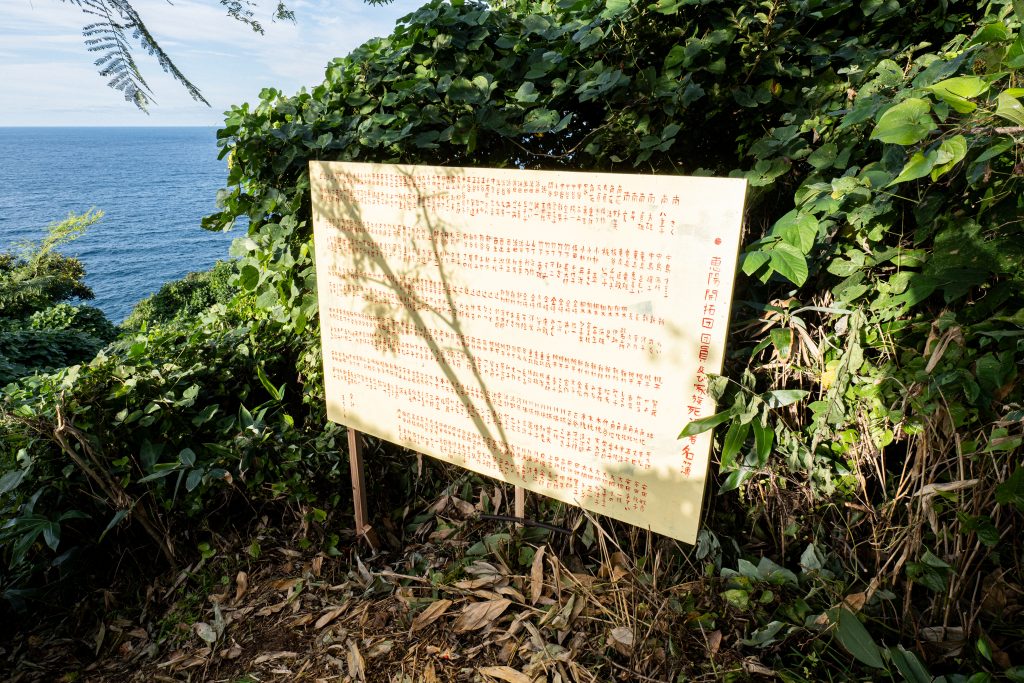
80
19 August, amidst the rumour-mongering of rumours. At night, as I recall, several non-commissioned officers and soldiers deserted with weapons and food. They said they were going to carry out a guerrilla operation. Afterwards, 片山上飛 was found and committed suicide with a pistol. He was a soldier of my age and a good comrade-in-arms.
81
On 20 August, the Kamikaze Pilots were disbanded. As soon as the disbandment ceremony was over, I flew back to my original unit. In the barracks, every glass window was broken, dishes were scattered on the floor, and flight uniforms and jackets were left unattended. Everyone seemed to be venting their unresolved feelings in this way.
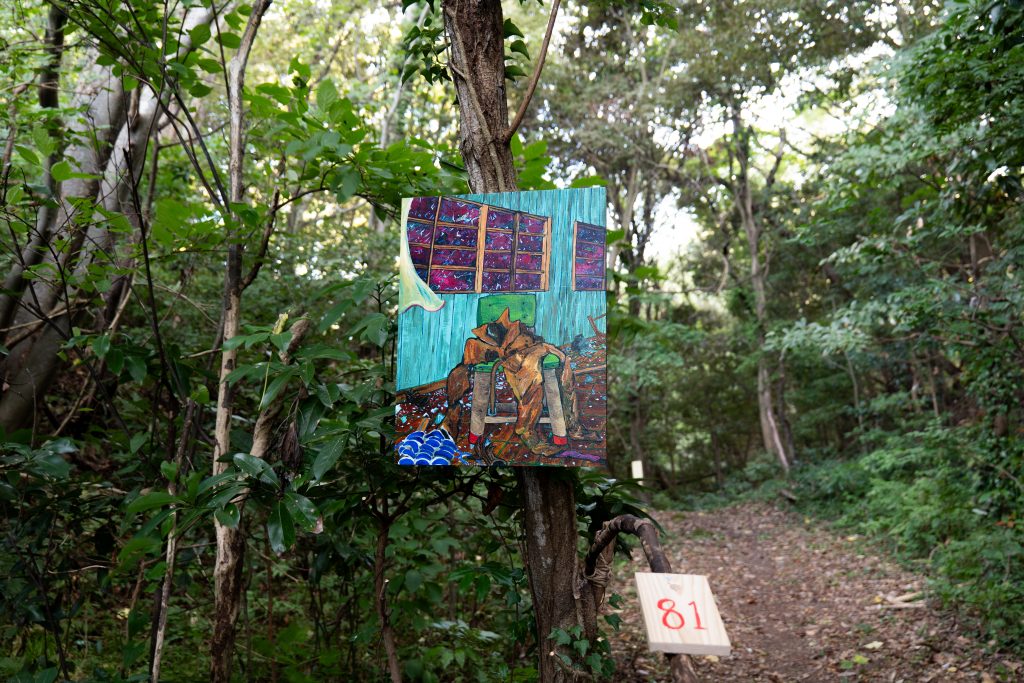
82
Some fired machine guns out of frustration at not being able to fight to the end, some flew planes and scattered leaflets without orders in response to the Army Fighter Corps, and some ran into the mountains in a truck with a girl who had come to work as a telephone operator, saying he was defending her purity.
83
Atsugi Air Base was the planned arrival point for MacArthur, so there was a disbanding ceremony for the Swallow Unit on 22nd, but I have no recollection of what the gist of it was. We were each to return to our hometowns. I boarded a Douglas bound for Tokushima via Komatsu, Ishikawa Prefecture and landed at Komatsu Air Base at 2.30pm. This was the last flight of my crew life.
84
On the afternoon of the 24th, I returned to my home, which I thought I would never return to, hanging on to my heavy robe and the sake and beer I had received from the troops. It was like a dream, but I could not escape the feeling of remorse that I had survived the defeat and was living in disgrace.
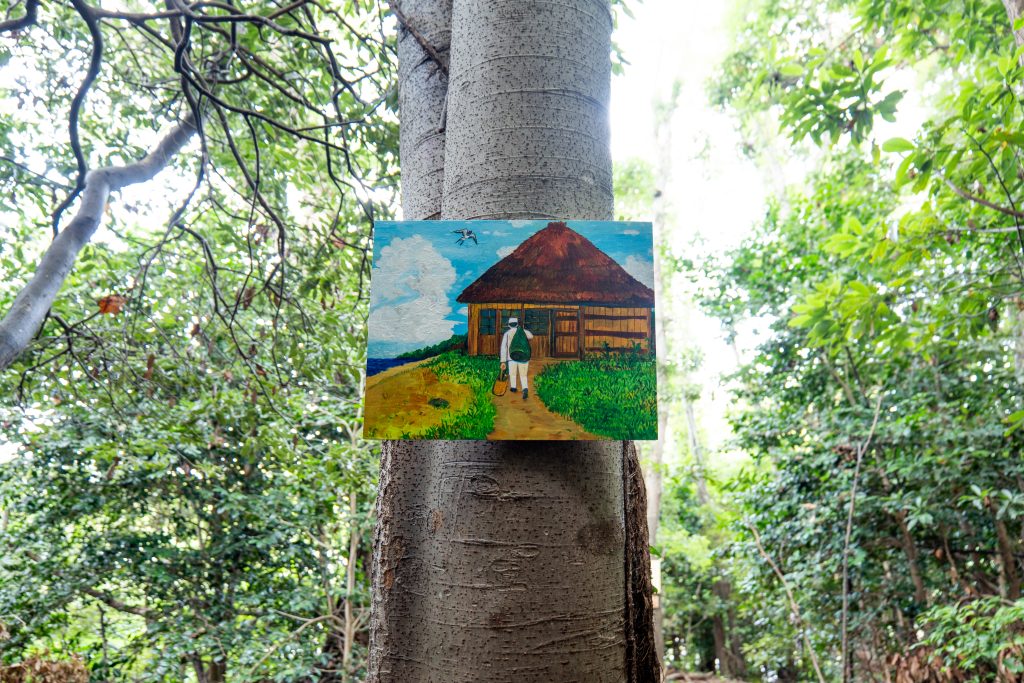
85
I wonder how all the Huiyang pioneers who crossed over to Manchuria are doing. I have not received any information. As time went by, there were speculations that the pioneers would probably not make it back alive.
Setsuo, the younger brother of the Manchurian Youth Volunteer Army, the older sister Sugi, an aunt, and her sister Chiyoko, who were all members of the pioneer group.
86
Having lived in Manchuria and experienced the harsh winter, I felt very anxious when I thought about Manchuria, which was about to experience a sharp cold spell. I only pray that I will be able to return home safely. My dreams of settling Manchuria and my position as a soldier disappeared into the distant clouds with the defeat of the war.